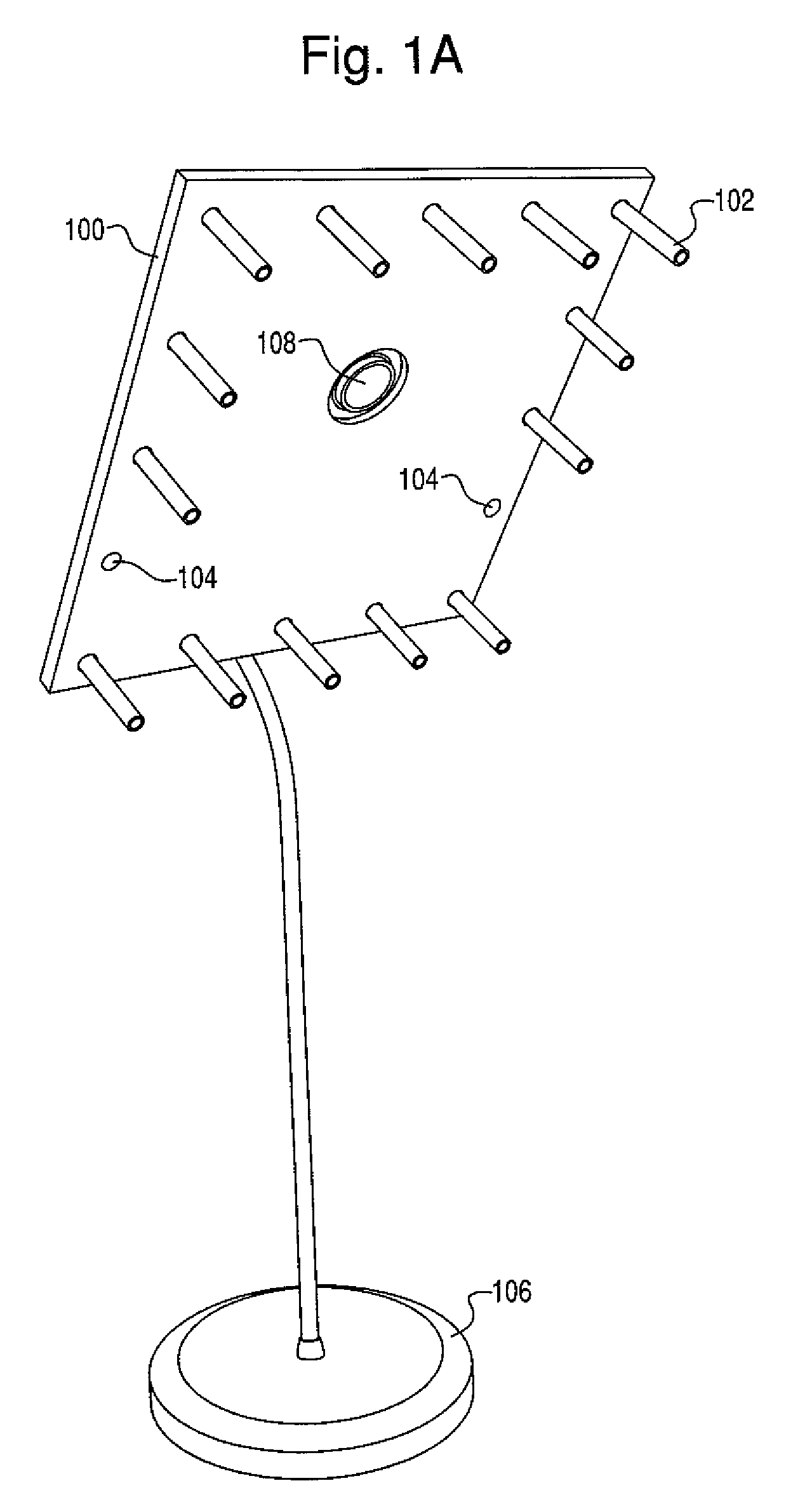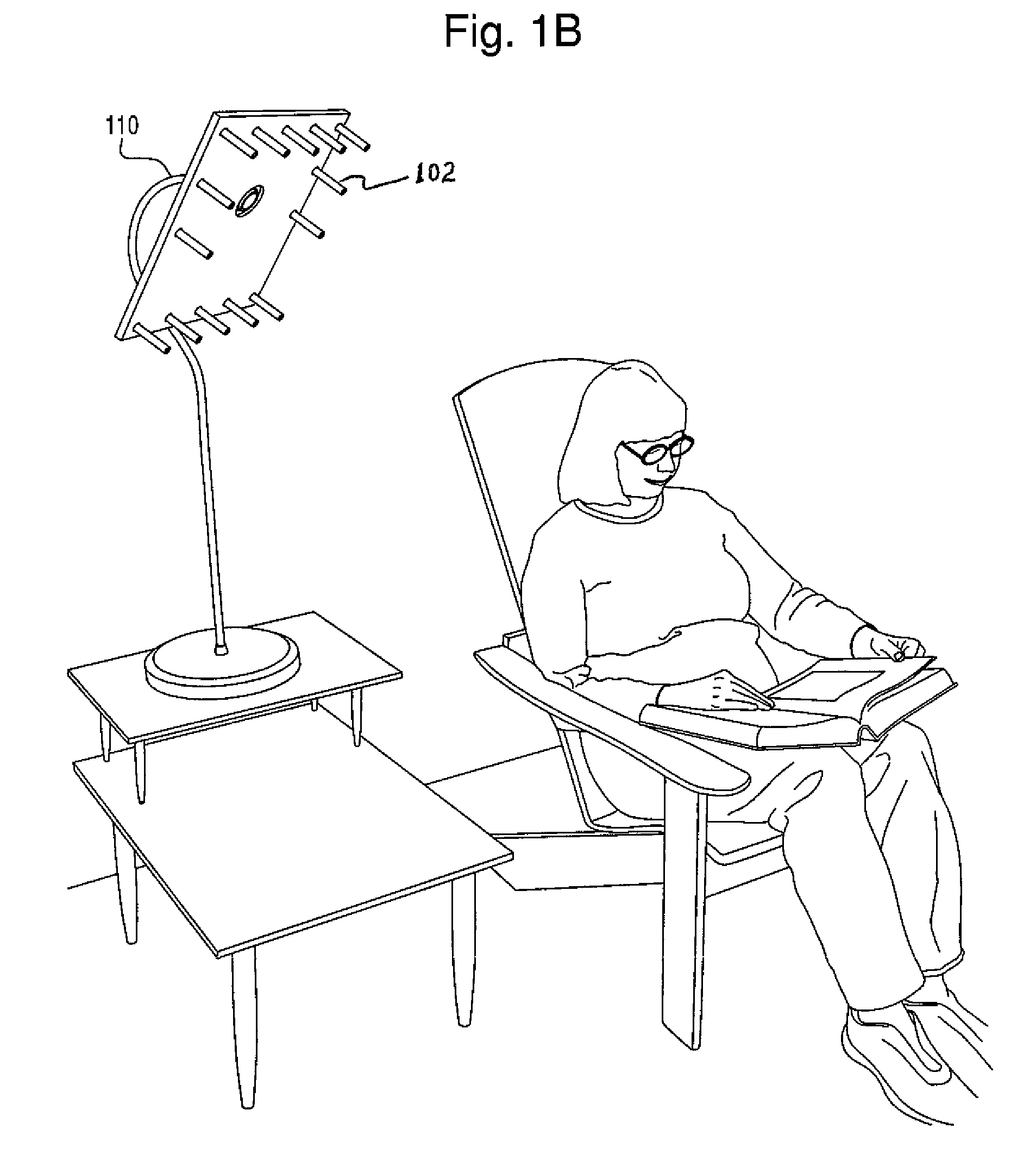Lighting fixtures and systems with high energy efficiency and visual quality
a lighting fixture and high energy efficiency technology, applied in the field of lighting fixtures, can solve the problems of compromising visual quality, prior art lighting is, in general, very wasteful of energy, and high energy efficiency, and achieves the effect of minimizing the amount of energy needed to illuminate an activity and reducing the energy consumption of localized activities
- Summary
- Abstract
- Description
- Claims
- Application Information
AI Technical Summary
Benefits of technology
Problems solved by technology
Method used
Image
Examples
Embodiment Construction
[0087]FIGS. 1A and 1B show a lighting fixture embodiment of the present invention. The fixture includes a multi-lamp unit holder 100. The holder 100 is shown as a rectangular sheet of thin plywood (0.25 inch or so), but could use other suitable lightweight rigid sheet materials (e.g. metal sheeting, fiberglass, fiberboard, etc). In this version, lamp units 102 are flashlights that are capable of being focused individually, by turning the heads of the flashlights. Each lamp unit can be turned on and off individually so as to effect the discreet lighting patterns a user may seek. Mounting holes 104 are drilled around the perimeter of the lamp unit holder 100 in any desired pattern or configuration. The mounting holes 104 are roughly the same diameter of the lamp units 102, allowing the lamp units to be held in place by friction. In this way, the lamp units 102 can be inserted, removed, and relocated easily as desired.
[0088]A tabletop stand 106, which allows the illumination to come fr...
PUM
 Login to View More
Login to View More Abstract
Description
Claims
Application Information
 Login to View More
Login to View More - R&D
- Intellectual Property
- Life Sciences
- Materials
- Tech Scout
- Unparalleled Data Quality
- Higher Quality Content
- 60% Fewer Hallucinations
Browse by: Latest US Patents, China's latest patents, Technical Efficacy Thesaurus, Application Domain, Technology Topic, Popular Technical Reports.
© 2025 PatSnap. All rights reserved.Legal|Privacy policy|Modern Slavery Act Transparency Statement|Sitemap|About US| Contact US: help@patsnap.com



